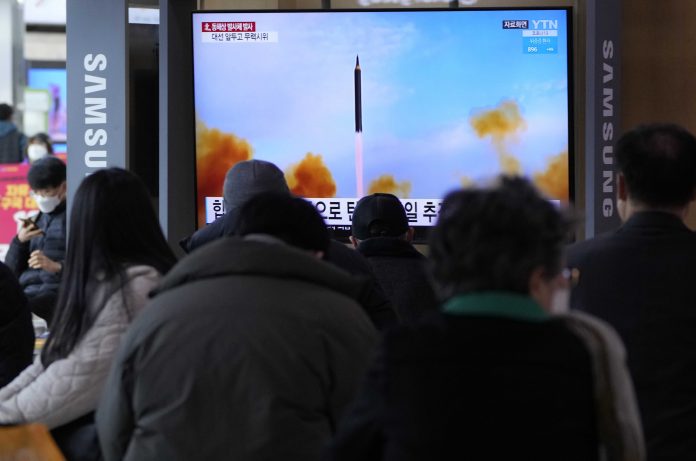
By HYUNG-JIN KIM
Associated Press
SEOUL, South Korea (AP) — North Korea performed data transmission and other key tests needed to develop a spy satellite, state media said Sunday, in the second such tests in about a week, indicating the country intends to conduct a prohibited long-range rocket launch soon.
The moves come as North Korea has been carrying out a spate of ballistic missile launches – including one detected by its neighbors on Saturday – in what experts call an attempt to add new weapons systems to its arsenal and pressure the United States into making concessions amid stalled diplomacy.
On Sunday, the North’s Korean Central News Agency said it conducted “another important test” the previous day under its plan to develop a reconnaissance satellite. It said authorities tested the satellite’s data transmission, reception and ground-based control systems.
The KCNA dispatch didn’t directly mention any missile or rocket launches to conduct such satellite-related tests, but it apparently referred to the North’s ninth round of missile launches this year, which Seoul, Washington and Tokyo spotted on Saturday.
Outside experts believe North Korea fired a ballistic missile carrying a camera to perform the tests described in the KCNA report. Last Monday, North Korea said it tested a camera designed to be placed on a reconnaissance satellite and released space-based photos of Earth, a day after its rivals said it conducted a ballistic missile launch.
A spy satellite is among a long wish list of new weapons systems that Korean leader Kim Jong Un has vowed to introduce to cope with what he calls U.S. hostility. To operate a reconnaissance satellite, North Korea must launch a long-range rocket to put it into orbit. But the U.N. bans such a launch by North Korea because it considers that as a cover for testing its long-range missile technology.
It’s unclear if North Korea has developed a sufficiently capable camera to be installed on a spy satellite, as the satellite photos the country released last Monday didn’t include high-resolution imagery.
After Saturday’s test, North Korea didn’t immediately disclose new satellite photos, suggesting the country failed to photograph higher-resolution images than earlier ones, said analyst Cheong Seong-Chang at the private Sejong Institute in South Korea.
“While it may succeed in what it calls ‘a reconnaissance satellite launch,’ it would still likely take a very long time for North Korea to obtain militarily meaningful reconnaissance technology because of powerful international sanctions that restrict its import of high-tech equipment and its poor civilian technology,” Cheong said.
North Korea put its first and second Earth observation satellites into orbit in 2012 and 2016, but some foreign experts say neither one transmitted any imagery back to North Korea.
Those satellite launches were still believed to have contributed to North Korea’s missile development program. In 2017, North Korea carried out three intercontinental ballistic missiles tests that analysts say demonstrated its potential ability to launch nuclear strikes on the American homeland.
Experts say North Korea will likely conduct a spy satellite launch ahead of a major political anniversary in April, the 110th birthday of state founder Kim Il Sung, the late grandfather of Kim Jong Un.
Negotiations between Pyongyang and Washington have remained largely stalled for about three years due to disputes over U.S.-led sanctions on North Korea. Earlier this year, North Korea test-fired a variety of sophisticated nuclear-capable missiles including one that analysts say places the U.S. Pacific territory of Guam within its striking distance.



















